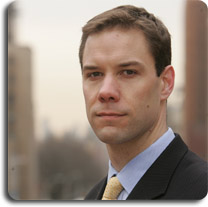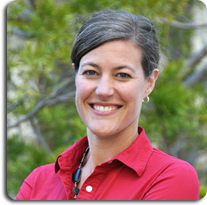 Dr. John W. McArthur is the CEO of Millennium Promise, one of TILE’s biggest partner charities. Millennium Promise is entirely devoted to eradicating extreme poverty – specifically, they’re *the* organization that’s focused on making the UN’s Millennium Development Goals a reality by 2015. A big part of that work includes the Millennium Villages project, which supports integrated social and business development services in rural areas in 10 African countries, serving a half-million people. Dr. McArthur is a Research Associate at the Earth Institute at Columbia University, and he also teaches at Columbia’s School of International and Public Affairs.
Dr. John W. McArthur is the CEO of Millennium Promise, one of TILE’s biggest partner charities. Millennium Promise is entirely devoted to eradicating extreme poverty – specifically, they’re *the* organization that’s focused on making the UN’s Millennium Development Goals a reality by 2015. A big part of that work includes the Millennium Villages project, which supports integrated social and business development services in rural areas in 10 African countries, serving a half-million people. Dr. McArthur is a Research Associate at the Earth Institute at Columbia University, and he also teaches at Columbia’s School of International and Public Affairs.
TILE: How do issues relating to poverty in Africa affect young people?
John: The burdens of extreme poverty are pervasive, and hit young people especially hard. Well over a billion people still live on less than $1 a day. Roughly 8 million children won’t survive until their fifth birthday this year. Hundreds of millions of young people cannot even begin to pursue their dreams or get a job because their basic needs are not even met: they lack access to food, education, clean water and basic sanitation, and are at-risk for preventable diseases like malaria and polio.
But in the connected global society of the 21st century, the challenges in any part of the world are the challenges of every part of the world. For many reasons, the unjust outcomes of extreme poverty threaten our global stability, our natural environment, and of course our conscience. That is why it is so encouraging that young people around the world are mobilizing in such great numbers and refusing to accept that the needless and preventable suffering of others far away from our borders does not affect us. And technology is only making these efforts easier every day, with websites like Kiva, Charity:water, Facebook, Twitter and others all helping to connect people and solutions in real time around the globe.
If we can eliminate the obstacles that prevent impoverished communities from capturing their potential, we will help strengthen not only those communities, but also the global community. Young people around the world have an excellent opportunity to help end extreme poverty in their lifetime and create an incredible legacy for their generation.
TILE: What’s the most important thing we can do to end poverty?
John: I think there are three things. The first is actually to make a decision in our own minds that we are committed to seeing the end extreme poverty. A sports coach once taught me that a commitment is just the one big decision you make so that you don’t have to make all the little decisions any more. Of course it doesn’t need to be a decision that takes over your entire life, but it can be a decision that helps guide thinking within one part of your life. So if we can all make that commitment and find ways to integrate it into our lives, whether we are going to school, working, or doing something else as our day-to-day priority, then I really do think we can be the generation to see the end of poverty.
Second, it is crucial to understand that, for the first time in history, we have the tools and know-how to end poverty in our lifetime. In pursuit of this critical goal, everyone has a role to play: students, faith-based groups, corporations, individuals, organizations and governments alike can all play hugely important roles in the fight to end poverty. For example, students can raise both awareness and funds on behalf of efforts to promote campaigns against malaria or for clean drinking water.
Third, it is important to learn about the Millennium Development Goals and the facts of extreme poverty in our world today, as well as the ways we can work together to end poverty. Then, make it clear to your friends, family, social networks, and government representatives that achieving the Goals is important to you. You can amplify your voice through letters, campaigns and social media. Organizations dedicated to ending extreme poverty, such as Millennium Promise, have the tools to get you started.
TILE: What’s the biggest challenge you face in your work?
John: The biggest challenge is typically a blend of people feeling that extreme poverty is too big a problem to solve, and that because a problem and approach to tackling it exists today, those dynamics will be similar in the future. We constantly need to “unpack” problems to see why they exist and what can be done about them. The past decade has seen huge numbers of individuals and organizations make major breakthroughs that change the conventional thinking about how extreme poverty can be solved. Staying on top of all these success stories is a lot of work, but very important!
TILE: What’s the best advice you would give to your teenage self?
John: I am a big believer in a line by the poet Wallace Stevens, who wrote that “After the final no there comes a yes. And on that yes the future world depends.” I wish I had learned it earlier, since it reminds me that there will always be naysayers, but a commitment to persistence, hard work, and integrity can provide the energy that helps shape the real breakthroughs for better tomorrows.
TILE: How do you think young people can play an important role in the changing landscape of philanthropy?
John: Philanthropy is becoming a bigger and bigger part of our society, and people are starting to practice philanthropy at younger and younger ages. I think the biggest way young people can change the landscape is by working together to support innovative approaches to still-unsolved global issues, especially approaches that leverage social networks, new technologies, quick sharing of information, and a real focus on results. The more we work together to get smart on the key issues and bring everyone together to solve them, the faster we will see the multipliers grow on each philanthropic dollar. Ending extreme poverty will likely be just one of the big problems today’s young generation solves in the coming years!
>> TILE brings you exclusive opinions, explanations, and interviews from experts in every industry. To read more, click on Ask the Experts in the TILE Library.
Have a burning question or an expert you’d like to see interviewed? Just Ask TILE!
 Rebecca Tarbotton, the Executive Director of
Rebecca Tarbotton, the Executive Director of  Dr. John W. McArthur is the CEO of
Dr. John W. McArthur is the CEO of